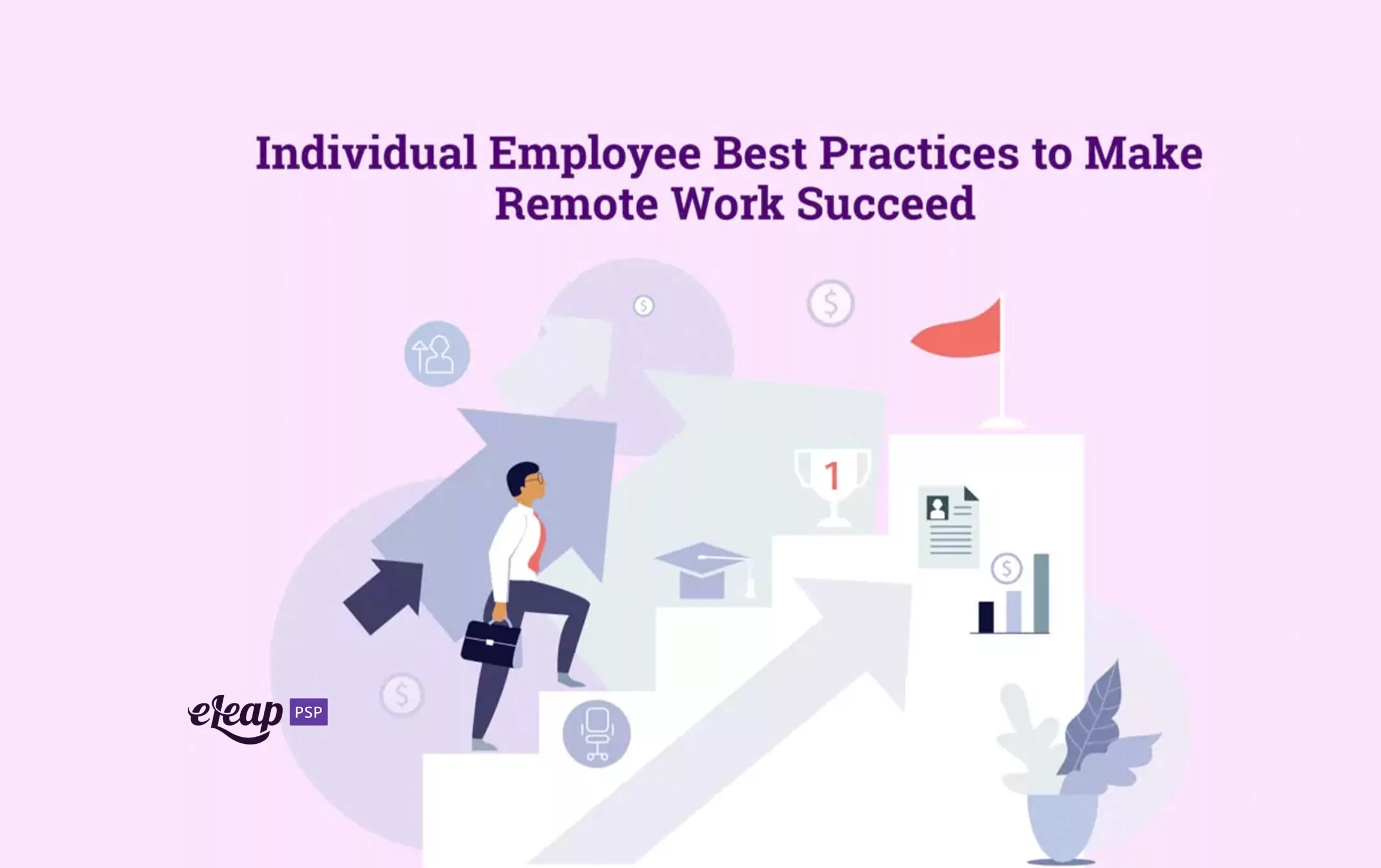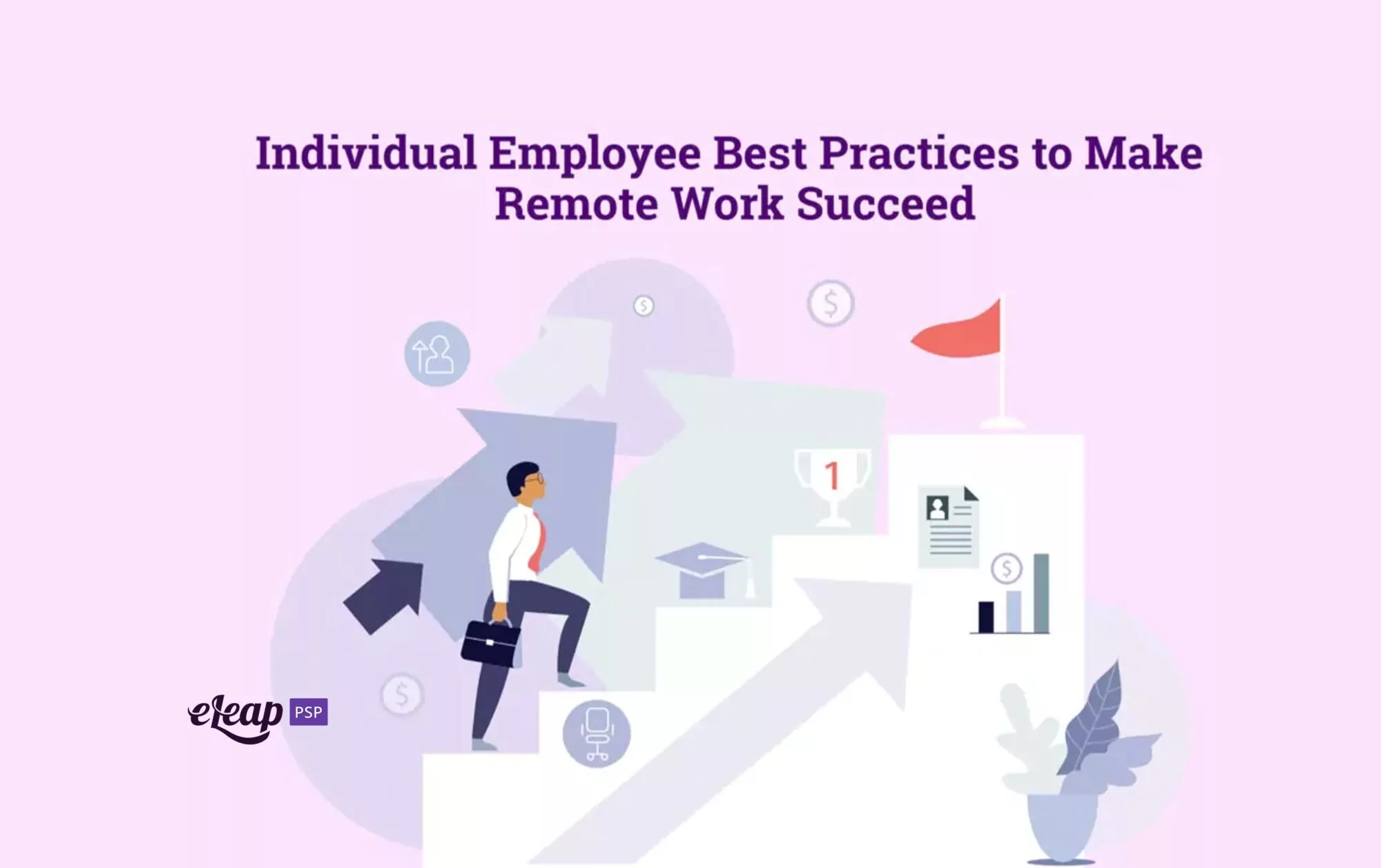Individual Employee Best Practices to Make Remote Work Succeed

We live in a changed world. Most of us have been working remotely for some time now. Many businesses may find that even when COVID-19 has run its course and we have a grip on the virus, the remote work scenario is simply a better fit and allows them to reduce overhead while providing employees with more autonomy and flexibility.
However, the fact remains that without intentionality and deliberate structuring, this can be a difficult situation for many people. Employees can struggle in many areas – when do they “turn off” for the day? How do they cut through the noise of electronic communication? How do they continue to feel like they’re part of the team?
There is no simple answer to these questions. Still, there are some best practices that individual employees can follow to help make remote work more successful and to get around some of those aforementioned pitfalls. In this post, we’re going to touch on some of the critical things that your individual employees should do to make a difference in their everyday experience.

Commit to Being Early
It might sound strange to argue for being early to a video conference call. However, it’s actually a very good practice that will help the individual employee but also contributes to a smoother, more successful meeting. Why is that?
For most of us, video calls involve more than just logging in and taking our virtual seat at the table. You have links that need to be clicked, windows that need to be resized, and things in our personal environment that need to be adjusted. Committing to being just a minute or two early to meetings ensures that everyone’s got the chance to take care of those small things ahead of time, allowing the meeting to start smoothly. It also tells everyone else in the meeting that the employee is professional and strives to avoid wasting other people’s time.
Shut Down Communications
This is another tip that seems to fly in the face of “good sense”. After all, if you’re working remotely, don’t you need to be more available, rather than less? That’s not true and here’s why.
When all your communication channels – email, Slack, Facebook Messenger, etc. – are open all the time, you’re always on. Distractions abound. You’re constantly clearing notifications, sending thumbs-up emojis, and replying to comments.
What does that do to your work and your ability to focus? It erodes it. It destroys it.
What’s the solution? You need to schedule on and off times. You need time for single work where you can focus on doing just one thing. Then you need times when you’re free to focus on communication without a project distracting you.
By separating these aspects of the workday, you improve the whole. Your work doesn’t suffer and your communication is more accurate. It’s really about unlearning all that “multitasking” stuff that was shoved down our throats years ago. Instead, take a cue from Zen masters and be mindful of what you’re doing when you’re doing it.
Do just one thing. Do it well. Take breaks in between.
The Right Workspace
It’s unrealistic to expect that every single employee will have a home office that’s a separate room, dedicated completely to the purpose of work. However, that doesn’t mean that they can’t have a dedicated workspace. It’s important to set aside some space that is strictly for work. Why?
By having an area that’s used only for work, employees can feel more like they’re “going to the office”. It’s about associating a space with productivity and projects, rather than having it as a multiuse space. It’s kind of like the advice from sleep doctors that you use your bed only for sleeping, or your brain will begin to associate that sleeping space with other activities, like watching TV. Read our “10 Tips to Make Working from Home Simpler and More Effective“.
There’s also the fact that by having dedicated workspace, your employees can avoid interruptions to at least some extent. Of course, if their children are also out of school, it will be impossible (and unadvisable) to completely eliminate disruptions.
Set a Timer
One aspect of Zen philosophy we mentioned above was taking time between things. This ties into several similar thoughts, including the Pomodoro Technique. What we’re recommending here is that your employees set a timer – say 50 minutes.
When the timer goes off, they stop what they’re doing and take a break until the top of the hour. That gives them 50 minutes in which they’re doing nothing but focusing on the project at hand. Then they have 10 minutes during which they can do anything but work on the project.
Doing this each hour of the day ultimately gives employees 80 minutes to themselves, but it’s more about breaking the routine and building some flexibility into their day. It’s also about recreating an environment more akin to the workplace, where they might get away from a project by grabbing a cup of coffee, talking to their coworker in the next office for a few minutes, or gathering around the watercooler with coworkers.
Creating Flexible Mind Space
All of the tips we’ve covered above are really about doing one thing – creating a flexible mind space. Working remotely can lead to some pretty unwanted behaviors. Employees feel like they have to be always on and always available. They might even work extra, which sounds like a good thing but is a negative behavior that erodes their quality of life.
By building barriers and setting up delineations between parts of their day, employees gain flexibility and create a healthier mind space. It also helps provide structure in a time when it’s so badly needed. Even employees who seem to be “just fine” may be struggling with the shift toward remote work.
As a final note, make sure you take the time to check in personally on your team. Do this when it works best for them – don’t be an interruption; show genuine care and concern for their wellbeing. It goes a long way toward making each individual feel like a valued member of the team and shows that you truly care about them.